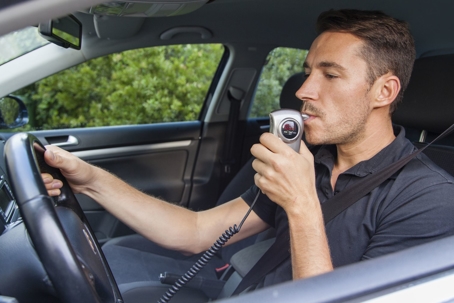- Horizontal Gaze Nystagmus (Otherwise, known as a “HGN”): Specifically, Nystagmus means an involuntary jerking of the eyes. Alcohol and other drugs cause nystagmus. Officers heavily rely on this Standard Field Sobriety Test to correctly identify subjects who are driving while impaired. The involuntary jerking of the eyes is observed when a person is impaired by alcohol or other drugs. When a person consumes a lot of alcohol and has a high blood alcohol concentration, the eyes begin to jerk sooner as they gaze side to side. At this time, the officer directs the person to follow a small stimulus (typically the top of their pen) with their eyes and eyes only while the officer observes the eyes moving back and forth.
- Vertical Gaze Nystagmus (Otherwise, known as “VGN”): VGN is the same test as HGN; however, instead of the officer moving the stimulus (target point) side to side, it is moved up and down. For VGN to be proper, the stimulus must be held at max elevation for a minimum of four seconds.
- Walk and Turn: Scientifically, impaired subjects often ignore the less critical tasks of driving in order to focus their impaired attention on more critical tasks. For example, a driver may ignore a traffic signal and focus instead on speed control. However, most people, when impaired, cannot satisfactorily divide their attention to handle multiple tasks at the same time. The Walk and Turn test is supposedly 79% accurate at detecting subjects at or above a 0.08 blood alcohol concentration. The Walk and Turn test includes two parts but most people think it is just one part.
- The first one is the instruction stage by the officer which includes standing while maintaining heel to toe position and collecting information about processing the officer’s request. Generally, the driver must stand with their feet in a heel-to-toe position, keep their arms at their sides, and listen to instructions. There are a number of clues that experience officers look for to determine whether or not you are impaired.
- The second one is the walking stage which should have been demonstrated by the officer before you begin. The walking stage includes taking nine heel-to-toe steps in a straight line while counting out loud down and back. Also, the walk and turn includes the turn which is demonstrated by the officer. Additionally, there are a number of clues officers look for to determine if a driver successfully completed the Walk and Turn Test.
- One Leg Stand: Officers are assessing a subject’s mental and physical impairment when suspecting a driver is under the influence. The Walk and Turn Test as well as the One Leg Stand test focuses on the abilities needed for safe driving, including: balance, coordination, processing instructions, etc. Also, the One Leg Stand Test includes two parts the Walk and Turn.
- As explained above, the officer will provide instructions and demonstrations to you pertaining to the One Leg Stand test.
- The balancing and counting stage is where the subject will raise one foot (approximately six inches off the ground), keeping their arms at their side, looking at their elevated foot, while counting out loud like “one thousand one, one thousand two, etc.” During a 30-second period, the officer will observe all he can while you are counting and balancing on one leg.
- Portable Breath Test (Otherwise, known as “PBT): A portable breath test is one of the most common methods of determining whether or not a driver is above a .08 blood alcohol concentration. An important note, for commercial drivers the threshold is .04. More importantly, the exact number that is reflected on the PBT instrument will not be used against you in court. However, the positive or negative inclination of alcohol that results from blowing into the PBT instrument can be used against you in court. It is important to know that the PBT is used to establish probable cause that a driver is impaired. Refusing this test roadside does not affect your license.

Types of Sobriety Tests

|
By
Jetton & Meredith, PLLC
Categories: